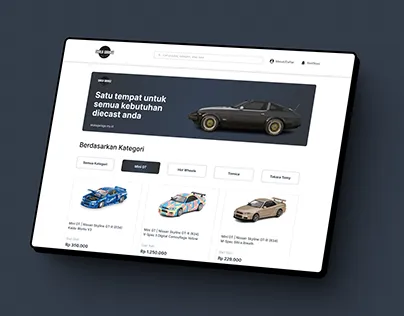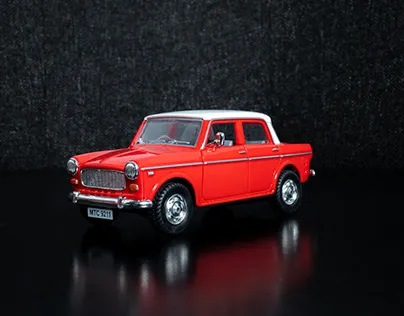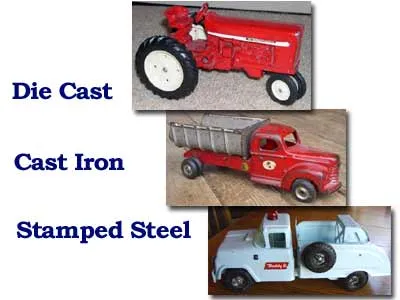What is Diecast Meaning?
The term “diecast” refers to a manufacturing process used to produce metal parts by forcing molten metal under high pressure into a mold cavity. The resulting product is often highly detailed and durable, making it ideal for a variety of applications, from automotive components to toys and collectibles. Understanding the diecast meaning is crucial if you are interested in collecting model cars, as these are predominantly diecast models. These models are prized for their accuracy and realism, capturing intricate details that would be difficult to replicate using other manufacturing methods. Diecast models are not just toys; they are miniature works of art and engineering, appreciated by enthusiasts worldwide.
The Diecast Process
The diecast process begins with the creation of a mold, typically made of steel. This mold contains the negative impression of the desired part. Molten metal, usually an alloy of zinc, aluminum, or magnesium, is then injected into the mold under high pressure. This pressure forces the metal to fill every detail of the mold. Once the metal has cooled and solidified, the mold is opened, and the finished part is ejected. The process is highly efficient and capable of producing complex shapes with tight tolerances. The diecast process allows for high production volumes, making it cost-effective for manufacturing various products, including the popular diecast model cars that collectors cherish. The precision and detail achieved through this process set diecast models apart.
Materials Used in Diecast Models

Several materials are commonly used in the diecast process, each with its own set of properties and advantages. These materials play a significant role in the final product’s quality, durability, and appearance. Understanding the different materials will enhance your appreciation of diecast models. The choice of material can also influence the model’s weight, feel, and level of detail. The materials used are selected based on factors like cost, strength, and the ability to capture fine details.
Zinc Alloy
Zinc alloy is one of the most popular materials for diecast models due to its excellent casting properties and relatively low cost. Zinc alloys are easy to cast and can reproduce fine details with high accuracy. They also offer good strength and dimensional stability. Zinc alloy is the go-to material for many diecast model manufacturers because of its ability to capture intricate designs and the ability to apply paint and finishes effectively. The alloy’s weight adds to the model’s realistic feel.
Aluminum
Aluminum is another common material, known for its lightweight properties and good corrosion resistance. Diecast aluminum is often used in higher-end models where both detail and durability are important. Aluminum allows for excellent surface finishes and can withstand exposure to various environmental conditions. Although generally more expensive than zinc, aluminum’s properties make it suitable for creating more complex and detailed models, ensuring they remain intact for years. It is also recyclable, making it an environmentally friendly option.
Plastic

While not as common as metal, plastic is sometimes used in diecast models, often for smaller details or components. Plastics offer flexibility in design and can be molded into complex shapes. Plastic is often combined with metal diecast parts to provide the final product with greater structural integrity or create specific features such as clear windows or interior details. The use of plastic can also lower the overall cost of production. Although plastic models don’t typically have the heft of metal diecast models, they offer a high level of detail and versatility in design.
The History of Diecast Models
The history of diecast models dates back to the early 20th century, with the rise of toy manufacturing. The earliest diecast models were simple toys, but they quickly evolved as manufacturing techniques improved. The use of diecast metal allowed for more detailed and durable toys than previously possible. Over the years, diecast models have become more sophisticated, with advanced features like opening doors, detailed interiors, and realistic paint finishes. These advancements have made them sought-after collectibles by enthusiasts worldwide. The evolution of diecast models mirrors advances in manufacturing processes and reflects the growing interest in realistic scale models.
Popular Scales in Diecast Models
Diecast models are produced in various scales, each representing a specific ratio of the model to the actual vehicle. Common scales include 1:18, 1:24, 1:43, and 1:64. The scale determines the size and level of detail of the model. Larger scales, such as 1:18, allow for greater detail and more intricate features, while smaller scales, such as 1:64, are ideal for displaying multiple models in a limited space. The choice of scale often depends on personal preference and the collector’s focus. Different scales cater to various tastes, with some collectors specializing in a particular size or type of model. Scale is an essential aspect of understanding and appreciating diecast models.
Common Features of Diecast Models

Diecast models often include a range of features designed to enhance their realism and collectibility. These features can vary depending on the scale and manufacturer, but typically include opening doors, hoods, and trunks; detailed engine compartments and interiors; realistic paint finishes and markings; and poseable wheels. Some models even include working lights and sounds, adding to their appeal. The attention to detail is what sets diecast models apart from other types of toys. The incorporation of such features greatly contributes to the collectibility and value of these miniature replicas.
Why Collect Diecast Models?
Collecting diecast models is a rewarding hobby for several reasons. Diecast models offer a connection to the world of automobiles, allowing enthusiasts to celebrate their favorite vehicles. They offer a tangible connection to history, allowing collectors to own miniature versions of classic cars and other vehicles. The intricate details and realistic features of diecast models provide a sense of craftsmanship and artistry. Diecast model collecting also provides a social aspect, with collectors often joining clubs and attending events to share their passion. The hobby is accessible to people of all ages and backgrounds, making it a popular and enduring pastime.
